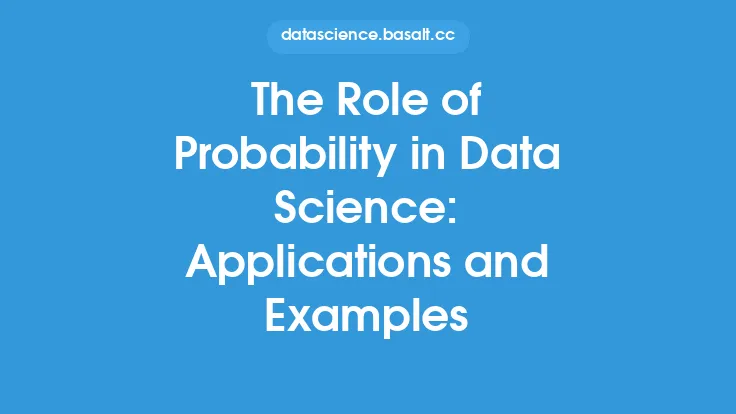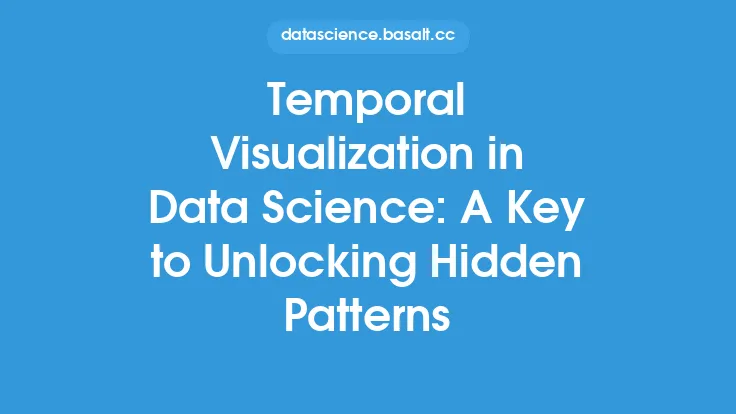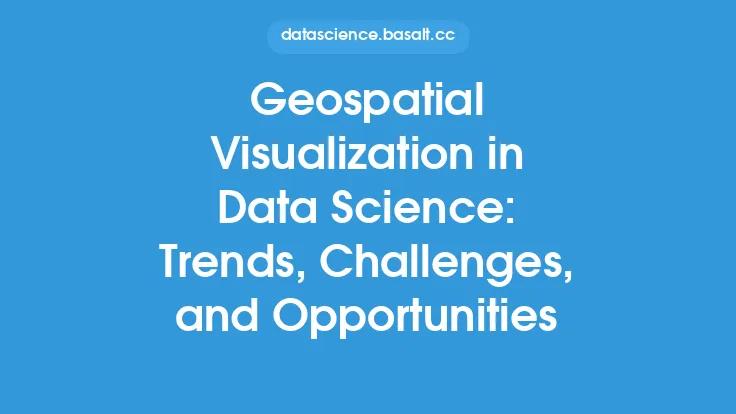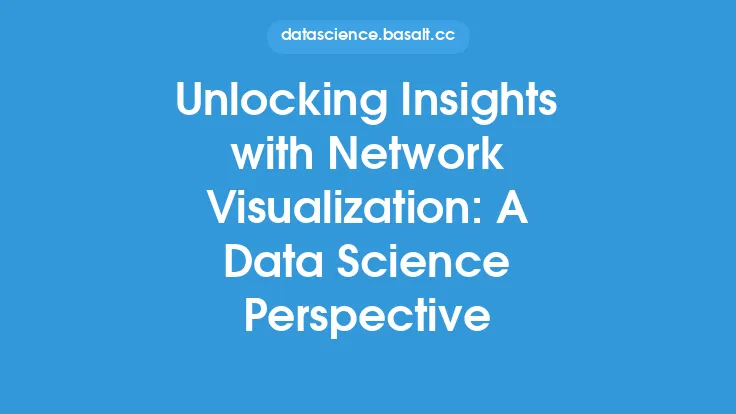Network visualization is a crucial aspect of data science, as it enables researchers and analysts to understand and communicate complex relationships within large datasets. By representing data as nodes and edges, network visualization provides a unique perspective on the structure and behavior of complex systems. This approach has numerous applications across various fields, including social network analysis, epidemiology, and recommendation systems.
Introduction to Network Visualization
Network visualization is a subfield of data visualization that focuses on representing data as a network of interconnected nodes and edges. This approach is particularly useful for analyzing and understanding complex systems, where relationships between entities are just as important as the entities themselves. Network visualization can be used to identify patterns, trends, and anomalies in the data, as well as to communicate insights and findings to stakeholders. The key components of a network visualization include nodes (also known as vertices), edges (also known as links), and attributes (such as node size, color, and edge weight).
Types of Network Visualizations
There are several types of network visualizations, each with its own strengths and weaknesses. Some common types include:
- Undirected networks: These networks have edges that do not have direction, representing mutual relationships between nodes.
- Directed networks: These networks have edges with direction, representing asymmetric relationships between nodes.
- Weighted networks: These networks have edges with weights or strengths, representing the intensity or importance of the relationships between nodes.
- Multilayer networks: These networks have multiple types of edges or relationships between nodes, representing complex systems with multiple interacting components.
- Dynamic networks: These networks have nodes and edges that change over time, representing systems that evolve or adapt over time.
Applications of Network Visualization
Network visualization has numerous applications across various fields, including:
- Social network analysis: Network visualization can be used to study the structure and behavior of social networks, including the spread of information, influence, and disease.
- Epidemiology: Network visualization can be used to study the spread of diseases, including the identification of high-risk individuals and communities.
- Recommendation systems: Network visualization can be used to study the behavior of users and recommend products or services based on their preferences and interests.
- Biological networks: Network visualization can be used to study the structure and behavior of biological systems, including protein-protein interactions, gene regulation, and metabolic pathways.
- Transportation networks: Network visualization can be used to study the structure and behavior of transportation systems, including traffic flow, route optimization, and logistics.
Tools and Techniques for Network Visualization
There are several tools and techniques available for network visualization, including:
- Graph layout algorithms: These algorithms are used to position nodes and edges in a way that minimizes overlap and maximizes readability.
- Node and edge attributes: These attributes can be used to encode additional information about the nodes and edges, such as size, color, and weight.
- Interactive visualization: This approach allows users to explore and interact with the network visualization, including zooming, panning, and hovering over nodes and edges.
- Network metrics: These metrics can be used to quantify the structure and behavior of the network, including degree centrality, betweenness centrality, and clustering coefficient.
- Programming libraries: There are several programming libraries available for network visualization, including NetworkX, Gephi, and Cytoscape.
Challenges and Limitations of Network Visualization
Despite the many benefits of network visualization, there are several challenges and limitations to consider, including:
- Scalability: Network visualizations can become cluttered and difficult to read as the number of nodes and edges increases.
- Complexity: Network visualizations can be difficult to interpret, particularly for complex systems with many interacting components.
- Data quality: Network visualizations are only as good as the data they are based on, and poor data quality can lead to misleading or inaccurate insights.
- Visualization bias: Network visualizations can be influenced by the choice of layout algorithm, node and edge attributes, and other visualization parameters, which can lead to biased or misleading insights.
- Interpretation: Network visualizations require a deep understanding of the underlying data and system, as well as the ability to interpret the visualization in the context of the research question or problem.
Best Practices for Network Visualization
To get the most out of network visualization, it is essential to follow best practices, including:
- Keep it simple: Avoid clutter and complexity by using simple, intuitive visualizations that focus on the most important nodes and edges.
- Use meaningful attributes: Use node and edge attributes that are meaningful and relevant to the research question or problem.
- Choose the right layout: Choose a layout algorithm that minimizes overlap and maximizes readability, and consider using multiple layouts to gain different insights.
- Interact with the visualization: Use interactive visualization to explore and interact with the network, including zooming, panning, and hovering over nodes and edges.
- Validate the results: Validate the results of the network visualization by using multiple metrics and techniques, and consider using simulation or modeling to test hypotheses and predict outcomes.
Future Directions for Network Visualization
Network visualization is a rapidly evolving field, with new tools, techniques, and applications emerging all the time. Some future directions for network visualization include:
- Integration with machine learning: Network visualization can be used to visualize and interpret the results of machine learning algorithms, particularly for complex systems with many interacting components.
- Dynamic and multilayer networks: Network visualization can be used to study dynamic and multilayer networks, which are increasingly important in fields such as social network analysis and epidemiology.
- Virtual and augmented reality: Network visualization can be used in virtual and augmented reality environments, which can provide new and innovative ways to interact with and explore complex systems.
- Big data and scalability: Network visualization can be used to visualize and analyze large datasets, which requires new and innovative approaches to scalability and performance.
- Interdisciplinary collaboration: Network visualization can be used to facilitate interdisciplinary collaboration, particularly between data scientists, domain experts, and visualization specialists.





